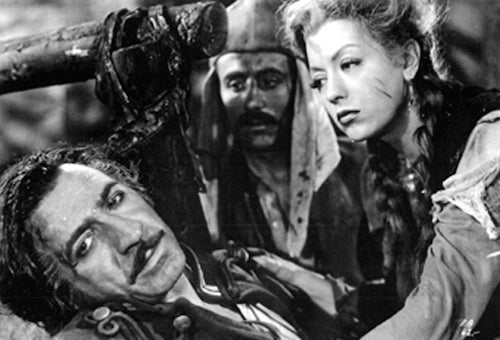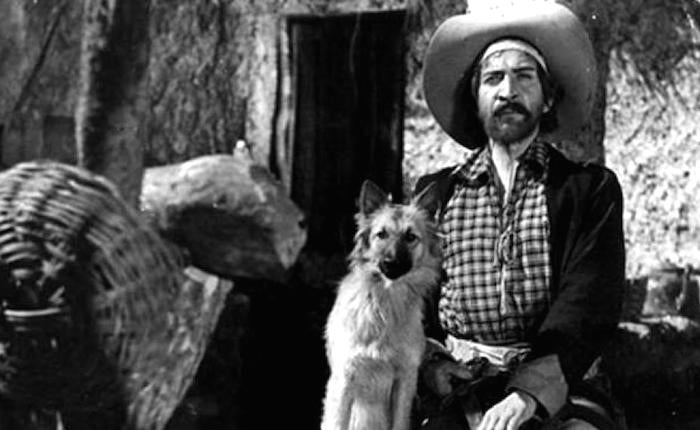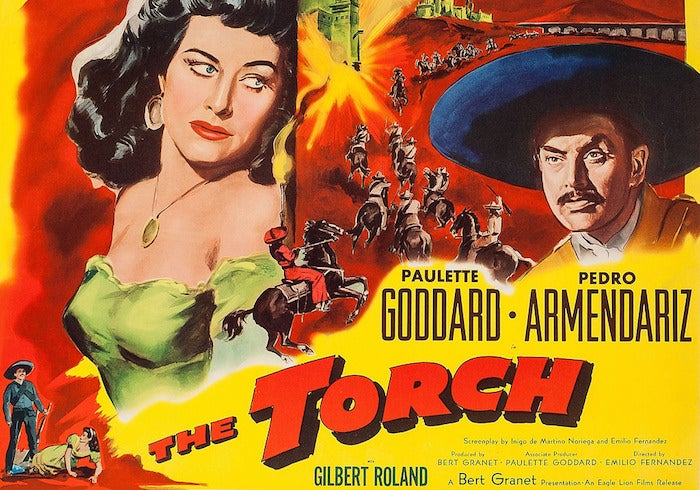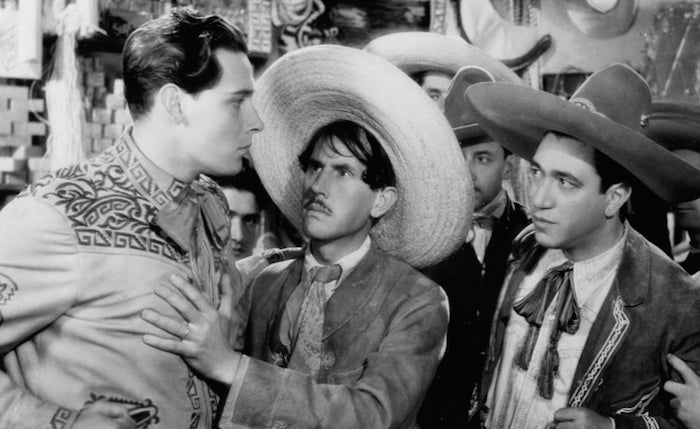
Pampa bárbara (1945)
This year’s Society for Cinema and Media Studies conference in Atlanta featured 23 simultaneous panels in 21 sessions over five days with 1,834 panel participants. With such an embarrassment of riches, one must out of necessity make hard choices among topics ranging from “Technotopias and Historical Turns” to “Porn Pedagogy.” Given our recently announced exhibition project on Latin American cinema in Los Angeles, I decided to focus on Latin American and Chicano film studies panels, in order to get an idea about the current state of research in the field. But even that goal seemed elusive, once I counted no less 50 papers in 20 panels, e.g. “Deconstructing Ideals in the Latin Diaspora,” “Aesthetic Politics of Alejandro Jodorowsky,” “Race. Film and Moving Image Repositories in Mexico,” “Global Latin American Cinema,” “Mexican Queer Aesthetics and Iconography,” and “U.S. Spanish Language Networks.” So what follows are some brief highlights.
In his video essay on the image of the gaucho in Argentine cinema in the 1930s, Nicholas Poppe compared and contrasted two gaucho films, La guerra gaucha (1942) and Pampa bárbara (1945), demonstrating their generic closeness to American westerns through scenes of folkloric music, hard riding over the Pampas, and the image of Native Americans as “other,” however with the difference that the gaucho is a figure for nationalist identification.

La guerra gaucha (1942)
On a panel dedicated to silent cinema spaces in Latin America, Brazilian scholar Luciana Correa de Araujo presented her study of the storied Teatro Santa Helena in São Paulo, noting the way local theater productions and (often) U.S. American film productions interacted. On the same panel, Rafael Freire discussed the preponderance of rear film projection in Brazilian silent cinemas (53 in São Paulo alone), a phenomenon that seems to be relatively unique in the world. Rafael named a number of reasons: 1) it was thought to be safer – given the danger of nitrate fires – to put the projector behind the screen, rather than in the audience; 2) many spaces were narrow with ceilings too low to allow for projection; 3) placing the projector outside the screening space could eliminate the noisiness of the projector. Finally, Juan Ospina in his intervention on urban locales and socio-cultural boundaries in Argentine silent melodramas discussed the fallen woman narrative, noting that it was most often the department store, the café and the cabaret that became sites of social disruption. It was here that innocent women from the countryside often found employment – a common fact of modernization – and were lured into a world of wealth by bourgeois clients looking for easy sexual favors. Interestingly, such women were not necessarily depicted as simple victims, rather, their portrayal oscillated between the activist sensibilities of female stars in Hollywood serials and the mundane passivity of Italian silent film divas.

The Torch (1950)
Nilo Couret in a panel on cinephilia and modernism analyzed the attempts by the government of Juan Perón to promote Argentine national cinema through a cinema exhibition trade show at the first Mar del Plata International Film Festival in 1948. Founded the year after a new protectionist film law had been passed in Argentina, the festival offered not only new films, but dioramas, demonstrations of production techniques, and working projection equipment, staged by the country’s film producers to counter American studio dominance. On the same panel, Rielle Navitski discussed the operation of the Cine Clubs de Colombia from 1949-1969, which like other film societies in Europe and the U.S., was established to bring art cinema to the country, because such films were not available in the country’s Hollywood-dominated classical Latin American commercial cinemas. The cine clubs accessed quality films through the newly founded film archives in Buenos Aires, São Paulo, as well as the Cinémathèque Française.

Allá en el Rancho Grande (1936)
Finally, on my own panel, “Latin America in Los Angeles,” Paulina Suarez presented her research on the stage and screen writer Antonio Guzmán Aguilera, arguing that the roots of the Mexican ranchero genre, epitomized by Allá en el Rancho Grande (1936), should be localized in the Mexican theater’s ironic and urbanized version of Mexican folklore, rather than in the folk songs themselves. In other words, rather than being an expression of authentic Mexican folk culture, the ranchero was already mediated via urban culture. Enlarging on his discussion of Spanish-language cinemas in Los Angeles in his book, Mexico on Main Street, Colin Gunckel made the case that Mexican films were not only screened throughout the U.S. in the 1930s-1950s, but that such films were in continuous dialogue with Hollywood through Mexican-themed Hollywood films, American remakes of Mexican films, and English synchronized Mexican exploitation films, like She Devil Island (1934), which has just been restored by UCLA Film and Television Archive. Finally, Alejandra Espasande Bouza presented her in-depth biographical research on Romualdo Tirado, a key figure as an actor, producer and director in Los Angeles’ Spanish-language theater and film scene.
What all this work demonstrates to me is that in Latin American film studies the era of political modernism, during which academics only saw value in the post-1960 cinema, is over. We can now look at the contradictions, fissures and pleasures of a Latin American genre cinema that is not necessarily self-reflexive, nor art, but was in fact truly popular.
< Back to Archival Spaces blog






 Mobile Navigation
Mobile Navigation

